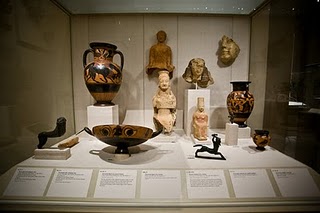The manner of the foreign sculptors from the north, however, changed on their contact with Spanish surroundings and their style was transposed by the indigenous masters into a specifically Spanish key. The boom in production was concentrated mainly in the Castilian regions, as well as
In Toledo, Hannequin de Bruselas, maestro mayor of the cathedral, put up the door of the south transept, the Puerta de los Leones (1462—1465), whose sculptured decoration was the work of Juan Alemn and his collaborators, among whom was Egas Cueman, Hannequin’s brother. From the start northern influences prevailed in this portal. The stiff, impassive, monumental statues of the splays and the figures in relief of the Tree ofJesse on the inner tym— panum are clearly defined by a linear rhythm emphasized by the prominent verticals or diagonals of the tubular folds between the smooth areas. This tense and graphic style, not without delicacy in the treatment of feminine and juvenile faces, hands and details of clothing, presents undeniable resemblances with the sculpture of the
These masters of
parallel to that of their contemporaries from
In funerary art the Toledo sculptors or their Castihan emulators also affirmed their specific manner, precise and vigorous, with an acuteness verging at times on dryness, as shown by many examples, such as the tombs by Sebastian de Almonacid of the constable Alvaro dc Luna (died 1489) and his wife (cathedral of Toledo); or that, justly famous, of the knight at arms Martin Vsquez de Arce (died 1486) (cathedral of Sighenza), which, unusually, presents the deceased leaning on his elbows and reading, thereby transforming the traditional type of recumbent figure in a humanist mode.
At Seville as well, the foreign masters who arc mentioned after the middle of the fifteenth century (like Lorenzo Mercadante dc Bretafia, Pieter Dancart, who is called airman, Master Marco Flamenco) introduced rigid, energetically outlined forms, physical types and compositional schemes at once stemming from the Netherlands or Lower Rhine and displaying various autonomous accents according to personality. The original use of clay for modelling statues or reliefs distingnishes several series of Sevdlian works. Those ofMercadante on the portals of the Nativity and the Baptism (1466-1467) of the cathedral embellish their somewhat stiff robustness with an emphasis on expression in the rounded and smiling feminine faces. His successor in practising this technique, Pedro Milln (mentioned from 1487 to 1507) sofrened still further the physiognomies of his polychrome terracotta figures, several of which bear his signature, such as the Christ of Sorrows from El Garrobo (Museo de Bellas Artes, Seville).
The enormous altarpiece in polychsFome wood on the high altar of Seville Cathedral, begun from a design by Pieter Dancart around 148 1-5482, and continued by various teams, notably from 5497 to i5cs by Master Marco, then by Pedro Milln mentioned in e5n6-15n7, and from in8 to 1525 byJorge Fernndez and his brother the painter Alexo, had its central part completed only in January 1526. This shows how difficult it is to estimate the share of each in this collective work. Some figures, like those of the Birth of the Virgin, rather suggest the art of Pedro Milln by their regular oval faces and quiet drapet— aes. Others, like the figures of the Raising of Lazarus, have more vivacity, more individuahzed features, and belong to a later stage, perhaps that of Master Marco and Jorge and Alexo Fernndez, which seems to echo the style of the Kalkar workshops in the entourage of Master Arnt.
At


















